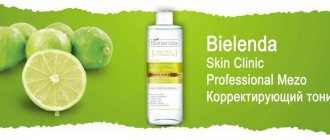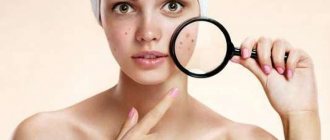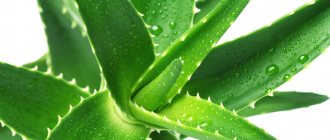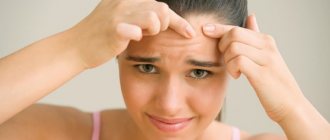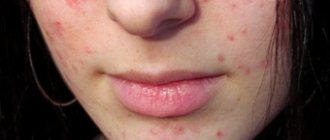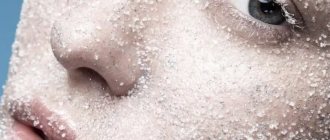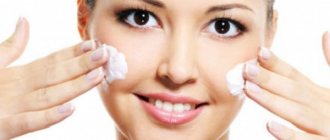The best creams and gels for acne.
October 22, 2022
10425
5
9
Content
- Why do acne appear on the face?
- How to choose an acne cream
- 10 best creams and gels for acne
- Zenerite
- Delex-Acne
- Baziron
- Klenzit-S from Glenmark
- Differin
- Juniper from Mi&Ko
- Clearasil Ultra
- Lumene Nordic Girl! Clear It Up!
- Skinoren
- Effaclar Duo + by La Roshe-Posay
Thanks to modern acne treatments, you can quickly and permanently solve the problem. We have created a selection of the best creams and gels for those with problem skin.
Both women and men experience pimples and acne, and at any age.
Phototherapy and lasers for acne treatment
Phototherapy and lasers are used to treat acne - either endogenous porphyrins contained in P. acnes, or sources of exogenous porphyrins are additionally applied to the skin before the procedure. Porphyrins have the property of absorbing light in the blue regions of the spectrum (wavelength 415 nm), which leads to the formation of unstable oxygen and, as a result, to the destruction of pathogenic bacteria P.acnes. The FDA recommends Lumenis devices (for example, the IPL module of the M-22 device), which use high-intensity light from the blue part of the spectrum, for the treatment of papulopustular acne, i.e. acne.
Light from the red part of the spectrum can also be useful because... Compared to blue light, it has a stronger anti-inflammatory effect (although it has a lesser effect on porphyrins). Therefore, a combination of light from the blue and red parts of the spectrum will be even more useful. Facial procedures are carried out 2 times a week for 15 minutes. According to the dermatology textbook Fitzpatrick's Dermatology, after a 4-week course of therapy in 80% of patients, the number of acne decreased by 60%. But in the absence of supporting procedures, their number returns to the original level - within 3-6 months.
Photodynamic therapy is even more effective in treating acne. It consists of applying exogenous porphyrins to the skin 1 hour before the procedure (aminolevulinic acid/ALA), after which exposure to a high-power light source occurs. The latter can be pulsed dye lasers, intense pulsed light or a broadband light source in the red part of the spectrum. ALA is metabolized in the sebaceous glands and hair follicle to porphyrins, which when exposed to light lead to the release of unstable oxygen, which damages the sebaceous glands. Several photodynamic therapy treatments can provide improvement for up to 5 months.
Pulsed KTP laser (wavelength 532 nm) - also leads to a reduction in the number of acne by about 40%. Use this laser 2 times a week for 2 weeks (a total of 4 treatments are required). In addition, some of the non-ablative infrared lasers at 1450 nm and 1320 nm wavelengths may also be useful for treating acne. they cause thermal damage to the sebaceous glands. However, any of these lasers requires a course of several treatments (and the improvement lasts up to about 6 months).
One of the newest acne treatment devices is the Isolaz device (from Solta Medical). The nozzle of the device is made in the form of a photo-pneumatic device, which creates negative pressure that sucks out the fatty secretion from the mouths of the hair follicles. Immediately after this, broadband pulsed light (wavelength from 400 to 1200 nm) is turned on, which acts on the P. acnes porphyrins, destroying these bacteria, and also has an anti-inflammatory effect.
What do phototherapy and lasers do?
Regular use in courses not only improves the course of acne, thereby reducing the number of inflammatory elements. The use of phototherapy (IPL) and lasers in courses often avoids the need for oral medications (antibiotics, isotretinoin), as well as the numerous side effects associated with them. But the cost of such treatment is high. We hope that our article on the topic: How to remove acne on your face was useful to you!
Sources:
1. Higher medical education of the author of the article, 2. Textbook on dermatology “Fitzpatrick's Dermatology” (8th edition), 3. “Modern methods of treatment and rehabilitation of patients with acne vulgaris” (Barinova), 4. “Acne from the position of evidence-based medicine” (Anisimova), 5. “Cellular mechanisms of barrier protective functions of the skin and their disorders in skin diseases” (Medelets).
Why do acne appear on the face?
Among the causes of acne are such non-obvious, but very possible, as lack of vitamin D, stress, poor environment, use of sunscreen, and long conversations on the phone.
Now let's look at the common causes of acne on the face.
- Hormonal imbalance.
Typically, acne appears in women during PMS, in teenage girls and in pregnant women. This is due to the fact that the level of steroid hormones in the blood increases - the sebaceous glands begin to work more intensely. Due to hypersecretion of sebum, the protective abilities of the skin are reduced. The skin secretion thickens, the ducts become clogged with plugs that block the sebaceous glands. - Follicular hyperkeratosis.
In this case, the cells with hair follicles are poorly renewed. The stratum corneum of the hair follicles becomes thicker, which prevents the outflow of secretions from the sebaceous glands. - Excessive proliferation of propionic bacteria.
There are millions of different microorganisms on the human skin and mucous membranes. But sometimes they begin to multiply uncontrollably, and inflammation is possible. Pimples appear because such bacteria feed on the sebaceous plugs of the hair follicles. - Lack of zinc in the body.
When there is a lack of zinc in the human body, the skin produces an excessive amount of sebum - hence pimples and acne. - Improper skin care.
If you use skincare products that are not suitable for your skin type or use low-quality decorative cosmetics, it is quite possible that you will develop acne. - Poor nutrition and gastrointestinal problems.
The appearance of the skin often depends on the health of the internal organs.
Therefore, with diseases of the intestines and stomach, acne may appear. A balanced diet (less sugar, fast food, baked goods) is also important. Read also Vitamins for hair loss: 10 of the best Review of the best vitamins for hair.
Key Factors in Acne Formation –
You probably already realized that overproduction of sebaceous gland secretions is one of the main reasons why acne appears on the face. But this factor is far from the only one. This also includes the process of follicular hyperkeratosis, and in addition, the bacteria Propionibacterium acne (P.acne), which live both on the surface of the skin and subsequently in the ducts of the sebaceous glands, are also important.
- Hyperproduction of sebaceous gland secretions – it is caused by increased production of androgens, as well as increased sensitivity of sebaceous gland receptors to androgens. We have already described this process above, but as it turned out, what is important here is not only that there is an increase in the secretion production of the sebaceous glands. A very important point is the change in the chemical composition of the secretion of the sebaceous glands (sebum). In particular, against the background of increased secretion, there is a decrease in the content of linoleic acid in the sebum.
The function of the latter is to regulate the processes of differentiation and desquamation of follicular and epidermal keratinocytes. The stratum corneum of the epidermis of the skin consists of epidermal keratinocytes, and follicular keratinocytes line the lumen of the hair follicle. A decrease in the content of linoleic acid in sebum causes follicular hyperkeratosis, which is one of the most important factors in the development of acne and pimples (we will talk about follicular hyperkeratosis below).Simultaneously with the decrease in the concentration of linoleic acid, the content of unsaturated fatty acids in the sebum increases (from 5 to 20%). Such acids are comedogenic and also contribute to the development of follicular hyperkeratosis and the onset of inflammation. And lastly, an increase in sebum secretion also leads to the fact that follicular keratinocytes begin to release an inflammatory mediator called IL-1α (interleukin-1α). This mediator also promotes follicular hyperkeratosis and the development of inflammation.
- Follicular hyperkeratosis - the lumen of the hair follicle is covered with layers of follicular keratinocytes of varying degrees of differentiation.
When their cell layers are renewed, a constant process of exfoliation of their surface layer occurs. A low concentration of linoleic acid in sebum leads to: 1) hyperproliferation of follicular keratinocytes, i.e. to a sharp increase in the number of their layers and their thickness, 2) to a disruption in the desquamation of keratinocytes into the lumen of the hair follicle. Follicular hyperkeratosis, together with an increase in sebum production, leads to the formation of fatty plugs (comedones) in the lumen of the follicles, obstruction of the follicles and the onset of the inflammatory process. Moreover, at the first stage, inflammation is not associated with a sharp increase in the number of P. acne bacteria in the lumen of the follicle and its damage, but is associated with the production of interleukin-1α by follicular keratinocytes, as well as with an increase in the concentration of free fatty acids. - The presence and activity of the bacteria "P. acnes" - the bacterium Propionibacterium acnes (and to a lesser extent Staphylococcus epidermidis) - are the main microorganisms that are involved in the formation of acne.
These bacteria are representatives of the normal opportunistic skin flora, which is also present on the skin of people without acne symptoms. For a long time, the importance of these bacteria was underestimated; for example, it was believed that they were only responsible for the development of local inflammation in the hair follicle. However, this bacterium also affects the formation of comedones (blackheads) themselves. In particular, the increase in the content of free unsaturated fatty acids in sebum occurs precisely thanks to the enzymes (lipases) of these bacteria. These enzymes break down di- and tri-glycerides contained in the secretions of the sebaceous glands into free fatty acids. And as we said above, free fatty acids are comedogenic and contribute to follicular hyperkeratosis and the development of inflammation. In addition, the listed bacteria secrete enzymes, which subsequently lead to rupture of the walls of the hair follicle - as a result of which the entire contents of the follicle are poured into the surrounding tissue, which leads to a pronounced local inflammatory reaction.
What factors can aggravate the appearance of acne -
- use of comedogenic cosmetics,
- insufficient cleansing of the skin from water- and fat-soluble contaminants,
- medications (prednisolone, steroid hormones, drugs with lithium, anticonvulsants, iodides and bromides),
- active sweating.
How to choose an acne cream
When treating acne and pimples, an integrated approach is required, so just cream or gel is not enough. To choose the “right” remedy, you need to determine the cause of the rash. By the way, it often happens that one specific cream does not solve the problem, so you need to try several products. For acne, pharmaceutical creams or gels are usually prescribed, which contain anti-inflammatory components:
- acids (azelaic, salicylic, kojic). They relieve inflammation, cleanse pores, and make skin tone more even.
- essential oils with anti-inflammatory and calming effects (green tea, tea tree, aloe vera, eucalyptus, calendula).
- absorbent minerals that absorb secretions from the sebaceous glands, as well as natural antibiotics (zinc, camphor, sulfur).
- hyaluronic acid (for deep skin hydration).
- retinoids, demethyl sulfoxide - for healing damage, regulating the functioning of the sebaceous glands.
- cosmetic oils that help regenerate the skin (grape seed, olive, peach).
As for acne creams with antibiotics and hormones, they act faster, but they should be prescribed exclusively by a dermatologist. Treating the skin with such drugs is only allowed for a short period of time. If you use hormonal or antibacterial agents uncontrollably, unwanted side effects such as withdrawal syndrome or skin atrophy may develop.
Causes of acne
Photos from open sources
Kinds
The consequences of acne are of several types:
- scars - at the site of the pimple, an area of dense tissue is formed, which is noticeably different from the surrounding skin and is characterized by a high content of collagen fibers;
- pigment spots - they form at the site of acne rashes and are noticeably different from the general tone;
- congestive erythema - a complication that occurs as a result of inflammation of small vessels, as well as subcutaneous fatty tissue and is accompanied by redness and thickening at the site of the former pimple;
- whiteheads, enlarged pores, etc.
To understand how to get rid of post-acne on the face and what removes it well, you need to establish which of the main types your problem belongs to. Only after this can you create an effective comprehensive treatment program.
We recommend
Curacen Essence (20 fl x 2 ml)
Nanoneedles with ultra-thin walls 30G
Nanoneedles with ultra-thin walls 33G
Curacen – for injection
Enlarged pores
The fact is that these are opening ducts of the sebaceous glands and the problem is directly related to acne. They expand due to hormonal imbalances, increased oily skin, poor diet, use of inappropriate cosmetics and other reasons. An additional factor that has recently been identified is the impact of free radicals, their content is increased in the atmosphere of large cities. In search of a way to exactly how and whether it is possible to cure post-acne on the face, you need to find out why the pores are enlarged.
Should we fight this problem? Certainly. They look unaesthetic, worsen the dermal relief, and in addition, they are an entry point for infections and are clogged with the secretion of the sebaceous glands. The processes of skin respiration and metabolism are disrupted.
To avoid enlarged pores and acne formation, you can undergo professional cleaning on time. This procedure stimulates their narrowing and normalizes the functioning of the sebaceous glands. With its help, you will stop thinking about how to get rid of post-acne spots and remove redness on your face with the help of a cosmetologist.
Stagnant traces
They are also called erythema. They arise as a result of capillary expansion. As a result, red areas form on the skin. In some cases, such phenomena go away on their own, especially if they arise as a response to mechanical stress, due to a reaction to intense sun or similar factors.
But most often, it is better to consult a specialist with such a problem, since usually the consequences of this kind are persistent and cannot be removed with home remedies.
Hyperpigmentation (brown spots)
Increased skin pigmentation usually occurs as a result of inflammation of papulopustular elements. Papules are inflamed small nodules with a diameter of 2-4 mm. Pustules are nodules with a cavity filled with pus formed inside them. A light-colored crust may form on their surface.
The formation of hyperpigmentation is usually promoted by active solar and mechanical exposure, for example, when trying to squeeze out pimples.
Whiteheads
The problem of how to effectively get rid of post-acne, how to cure the consequences of inflammation, is especially aggravated if the skin lesion takes the form of whiteheads (milia).
As a rule, they are localized in the following areas of the face:
- forehead;
- nose;
- cheeks;
- chin;
- around eyes.
Most often, milia appear during periods of hormonal changes, including adolescence, as well as during pregnancy. The second factor influencing the formation of whiteheads is increased fat content.
Ways to effectively remove post-acne scars, how to get rid of them in these situations, should include changing your diet, a competent approach to skin care, as well as monitoring hormonal levels and its timely correction.
Scarring
They can form where pimples once were. Studies have been conducted in which it was found that about 1% of people who have suffered from acne suffer from them. However, approximately one-seventh of scars are disfiguring in nature, which means they lead to serious psychological problems. This condition requires an individual approach and careful study of the quality of the skin around the scar. Also, the nature of treatment depends on the stage of maturity.
Zenerite
One of the most popular remedies for acne and acne, which contains an antibiotic (erythromycin) and zinc salts. Erythromycin prevents the growth of bacteria, and zinc salts work as an antiseptic. If you have been prescribed "Zinerit" for acne, remember that it is not advisable to use it often and for a long time, because addiction develops and the drug simply stops working.
Zenerite
Astellas Pharma Europe, Russia
Zenerite powder for solution preparation (external use), 30 milliliter bottle - a medicinal product for the treatment of acne.
Resistant to cosmetic products. from 533
5.0 1 review
1860
- Like
- Write a review
Squeezing pimples and blackheads (comedone extraction)
For comedonal and papulopustular forms of acne, invasive methods are sometimes used, for example, comedonal extraction. Extraction means their removal/squeezing out - using special comedones extractor tools, or by palpation. Moreover, we are talking about the removal of macrocomedones, i.e. large eels. But squeezing out pimples (papules and pustules) can, at best, lead to the appearance of a hyperpigmented spot in this area in the future.
In the worst case, self-squeezing pimples and blackheads can lead to the spread of inflammation and the formation of deep subcutaneous pimples, which will leave superficial or deep atrophic scars on the skin. Therefore, only comedones (acne) can be squeezed out, and secondly, this should only be done by a dermatologist or a dermato-cosmetologist. The procedure is called “mechanical facial cleansing.”
Mechanical facial cleansing: video
Important: keep in mind that the removal of comedones is much easier and without complications if the patient has previously used topical retinoids for at least 3-4 weeks. The fact is that topical retinoids (adapalene) also have comedonolytic properties.
Delex-Acne
This gel works well if you have mild to moderate skin breakouts. "Delex-Acne" is also prescribed for demodex (skin mites). An excellent product for home daily facial skin care, it is also used for the active treatment of acne as part of complex therapy. Delex-Acne contains sulfur, calendula and nettle. The acne gel does not contain hormones, antibiotics or alcohol, and therefore has no age restrictions for use. If you choose this gel, then it is optimal to combine it with lotion from the same series. You should use Delex-Acne gel no more than several times a week so as not to dry out the skin. The disadvantages of the product are that the smell is not very pleasant and that you can’t buy Delex-Acne in every pharmacy.
Delex-Acne
, Russia
The gel is characterized by anti-inflammatory, absorbable, antibacterial and sebostatic (drying) effects.
The drug in gel form is considered optimal for use in case of oily seborrheic skin, since the use of creams and ointments can increase the proliferation of harmful microorganisms. from 150
5.0 2 reviews
218
- Like
- Write a review
Choosing a cheap ointment for its intended purpose
Depending on skin problems (subcutaneous, purulent, teenage acne, etc.), it is recommended to use the following types of ointments.
Be sure to read:
3 reliable ways to use Vishnevsky ointment for acne
Hormonal inexpensive ointments with antibiotics
Hormonal ointments are used to treat neurodermatitis, psoriasis, varicose eczema, atopic dermatitis, etc. The following are considered effective hormonal drugs in the fight against acne:
- Hyoxyzone;
- Triderm;
- Akriderm;
- Hydrocortisone;
- Prednisolone;
- Elokom et al.
The main thing is to make sure there are no contraindications before use and follow the instructions.
Anti-inflammatory ointments
The most effective anti-inflammatory ointments include Sulfargin, Metrogyl, Skinoren, Eplan, Traumeel, Kuriosin, etc. And each of these drugs has its own set of characteristics and contraindications that must be taken into account before use.
List of healing ointments
The following medications will help speed up the skin healing process:
- Bepanten;
- D-Panthenol;
- Astroderm;
- Doctor;
- Get well, etc.
Important! Healing ointments can be used only during the recovery stage (when the pimples have already begun to dry out), but not earlier.
Ointments for teenage acne
Products such as Skinoren, Baziron, Aknestop, Azelik, Levomekol, Zinc ointment, Tetracycline ointment, etc. have proven themselves well in the treatment of teenage acne. However, you should not squeeze pimples , because the rash will spread even more, subsequently leaving scars and scars.
List of ointments for subcutaneous acne
The following remedies are effective in the fight against subcutaneous acne:
- Streptocide ointment;
- Syntomycin;
- Heparin;
- Curiosin;
- Based on calendula;
- Cynovitis;
- Salicylic;
- Zinc ointment, etc.
More detailed information about the treatment of subcutaneous acne can be obtained by consulting a dermatologist.
Ointments for purulent acne
To treat purulent acne, drugs such as Skinoren, Baziron, Dalatsin, Erythromycin, etc. are used. And the ointment does not always need to be applied pointwise. In some cases, it is preferable to distribute the medicine over the entire face.
Note! Before applying the ointment, the ulcers must be treated with hydrogen peroxide (to cleanse them of pus).
List of ointments for marks, scars and acne scars
At the final stage of therapy, when there is a need to smooth out existing scars, the following remedies will be effective:
- Solcoseryl;
- Actovegin;
- Methyluracil;
- Dermatix;
- Fermenkol et al.
Be sure to read:
How to properly use Polysorb for acne: rules of administration and recipe for a face mask
Baziron
Acne gel "Baziron" exfoliates dead skin cells, which often “clog” pores, which is why pimples and blackheads form. The drug contains benzene peroxide and green tea, which dry out inflamed skin, normalize its cellular respiration and reduce secretions from the sebaceous glands. "Baziron" helps well with blackheads and subcutaneous pimples. The product perfectly moisturizes the skin.
Baziron AS
Galderma, Switzerland
Baziron AS is an allergy-resistant drug; the composition of this drug has been thoroughly tested for allergens, which ensured that the risk of an allergic reaction when using it is minimized.
The product has been dermatologically tested to identify any side effects that may irritate the skin, suitable for dry and sensitive skin. Does not contain alcohol. It also has anti-comedogenic properties, that is, it opens the fullicles and removes comedones (blackheads) on the nose. from 426
5.0 1 review
1273
- Like
- Write a review
Reasons for appearance
Acne is an accumulation of sebaceous gland secretions, pus and impurities trapped in the pores on the face. They rarely appear on healthy skin that is not prone to oiliness.
Factors predisposing to the occurrence of acne are the following:
- Severe stress. This is why most rashes appear on the eve of any important events. Any stress increases the release of special hormones that affect the secretion of glands located in the skin.
- Oily skin type. It is a priori more prone to acne formation. With this type of skin, the secretion of the sebaceous glands is secreted in large quantities. Because of this, the excretory ducts become clogged and often become inflamed.
- Incorrect care. The use of products that are not suitable for a certain skin type negatively affects its condition, in particular the functioning of the glands. Based on this, separate types of cosmetics and care products are produced for owners of different types.
- Period of the menstrual cycle. Most often, most pimples pop up a few days before your period. This is how many girls determine the approach of their period. The deterioration of the skin these days is due to the corresponding hormonal changes in the body.
- Poor nutrition. Eating large amounts of fatty and fried foods has a negative effect on the condition of the skin. At the same time, if you eat healthy foods and drink a lot of purified water, your facial skin will quickly cleanse.
- Chronic diseases. Pathologies of the gastrointestinal tract play a special role. If any of them does not work properly, acne appears on a certain area of the face.
- Failure to comply with personal hygiene rules. The habit of constantly touching your face with dirty hands or falling asleep without washing off your makeup leads to the contact of pathogenic microorganisms on the skin, which provoke the development of inflammation.
Often there is a complex influence of several reasons.
Klenzit-S from Glenmark
This acne gel contains the antibiotic clindamycin, which fights acne by reducing inflammation. And adapalene (a derivative of vitamin A) moisturizes and regenerates the skin. If you find a pimple on your face in the evening and smear it with Glenmark Clenzit-S gel, the pimple will be gone in the morning. You can use the product for no longer than three months (once a day), because addiction may develop. Improvement in skin condition occurs after a week of using Klenzit-S. During treatment, peeling, burning and redness of the skin are possible. But after three weeks the skin gets used to it. It is better to wash your face with gentle, soft products at this time. During pregnancy and frequent exposure to the sun, you cannot be treated with Klenzit-S gel.
Klenzit-S
Glenmark Pharmaceuticals, India
A preparation for external use for the treatment of acne.
Before use, you should consult your doctor. from 486
5.0 1 review
880
- Like
- Write a review
What it is
This term suggests a symptom complex of secondary rashes. They appear after various forms of skin inflammation, pimples, and acne. Considering that its debut usually occurs in adolescence, the remaining traces pose a serious problem for youth and affect the psychological state of young people. If acne develops at an older age, the patient may also experience post-acne; treatment in this case is complicated by the general condition of the skin.
The consequences come in the following forms:
- hyperpigmentation;
- pathological scars;
- atheromas;
- milia (whiteheads).
Treatment and subsequent recovery of patients requires an integrated approach.
Differin
The active ingredient in this gel for acne and pimples is adapalene (retinoid). Differin is indicated for people with combination and oily skin. Judging by patient reviews, this drug really works, although it is inexpensive. An important advantage of this gel is that it removes acne and scars on the skin. You can use Differin for a long time because it does not contain an antibiotic.
Differin
Laboratoires Expanscience, France
A drug for the treatment of acne, for external use.
from 624
5.0 2 reviews
1220
- Like
- Write a review
Antibiotics for acne treatment –
Antibacterial drugs for the treatment of acne can be used both for external use (usually in the form of gels) and in the form of tablets for oral administration. Modern research shows that antibacterial therapy in patients with acne is not very effective, because Over time, it causes the formation of resistant strains of bacteria and, as a result, leads to more severe acne. But in some cases, antibiotic therapy for acne is still necessary, and in addition, there are ways to reduce the risk of bacterial resistance to antibiotics.
a) Mild to moderate papulopustular acne:
Antibiotics, if prescribed, are only externally. These may be drugs such as Dalacin, Clindovit or Clindatop. These drugs are monocomponent gels containing the antibiotic clindamycin. In addition, there are drugs in the form of solutions for topical use, for example, the drug Zerkalin. This drug is clindamycin based, but it also contains alcohol, which is actually not very good for acne patients (especially if you are also using retinoids and benzoyl peroxide).
Another drug - Zinerit (in the form of a solution that is applied using an applicator) - is based on erythromycin, but there are now many resistant strains of the bacterium P.acnes to this antibiotic. There are also combination preparations that, in addition to the antibiotic, may additionally contain either the retinoid adapalene or benzoyl peroxide. An example of several combination preparations in the form of gels:
- Klenzit-S – contains clindamycin 1% + adapalene 0.1%,
- Indoxyl – contains clindamycin 1% + benzoyl peroxide 5%.
Photos of some drugs –
Important: for papulopustular acne of mild or moderate severity, antibacterial gels are prescribed primarily only in cases where the predominant inflammatory elements in the patient are pustules with pus. In this case, in addition to the external antibiotic, we must simultaneously use + external retinoids, + benzoyl peroxide.
And here you may ask: why is it recommended to also use benzoyl peroxide when prescribing an antibiotic gel? Isn't one antibiotic enough? The fact is that the use of benzoyl peroxide together with an antibiotic greatly reduces the risk of P.acnes bacteria developing resistance to antibiotics. Including the development of such resistance contributes to the transformation of mild forms of acne into forms with a more severe course.
As for patients whose inflammatory elements are represented predominantly by papules (i.e., without pus), it is irrational to prescribe antibiotics in this case. It is optimal to use only a combination of external preparations “benzoyl peroxide + retinoid”.
b) Papulopustular form of severe acne:
For severe papulopustular acne, antibiotics are prescribed only orally (i.e. in tablets for oral administration), plus we prescribe externally retinoids + benzoyl peroxide. For systemic antibiotic therapy, drugs from the tetracycline group will be primarily used - this can be either tetracycline itself or its derivatives - doxycycline and minocycline. Only a doctor can determine the optimal dosage for each individual patient.
As for tetracycline, the average daily dosage is usually 1000 mg, but in serious cases the dose can be increased to 3500 mg per day (such doses can only be used under monitoring of liver function). Tetracycline can be taken only 1 hour before meals or 2 hours after; the duration of administration is determined by the doctor, but not more than 8 weeks. However, this drug has serious age restrictions, and in recent years more resistant strains of P. acnes have been discovered.
Much fewer resistant P. acnes strains have been found to lipophilic tetracyclines (such as doxycycline and minocycline). Doxycycline is taken at a dose of 100 to 200 mg per day orally for no more than 8 weeks, regardless of meals. However, it induces photosensitivity in the summer and therefore in summer it is better to use another antibiotic (azithromycin). Minocycline is also taken at a dose of 100-200 mg per day, but this drug can cause blue-black pigmentation in different areas of the skin. This pigmentation most often occurs in the area of atrophic scars and acne scars.
A good drug of doxycycline is
Antibiotics of the Macrolide group - previously a drug such as erythromycin was widely used, but now there are a lot of resistant strains of P.acnes to it. It is more preferable to prescribe azithromycin in a dose of 250 to 500 mg (taken only 3 times a week). Unfortunately, this drug may have side effects such as diarrhea, and therefore it is best to take it only with parallel medications to restore intestinal microflora. Azithromycin is a good alternative for patients who cannot use doxycycline.
Antibiotics of the Lincosamide group - clindamycin belongs to this group of antibiotics. But its use is justified only for external therapy (with the composition of products for external use), and when taken orally, there is too high a risk of getting a severe form of anibio-associated diarrhea, which is called pseudomembranous colitis. This is such a terrible thing (with a high mortality rate) that don’t even think about taking clindamycin tablets.
Drugs of the sulfone group - these include the drug Dapsone, but it can only be used if the patient develops resistance to other antibiotics (i.e. this drug will not be the first choice drug). Antibiotic resistance should be suspected if there is no response to treatment after 6 weeks of antibiotics. Moreover, in cases where we assume resistance, it is very important for us to exclude the development of gram-negative folliculitis in the patient (usually it occurs precisely after long-term use of antibiotics in the past).
Important: the most painful area of antibiotic therapy in the treatment of acne is the development of resistant strains of P.acnes and S.epidermidis. Concurrent use of topical benzoyl peroxide products with antibiotics, and avoidance of frequent changes between different antibiotics, are the best ways to prevent antibiotic resistance in P. acnes and S. epidermidis. Phototherapy procedures (IPL), photodynamic therapy, and the use of lasers can help reduce the need for antibiotics. We will tell you more about them at the end of the article.
Juniper from Mi&Ko
Acne cream perfectly fights acne and other imperfections of problem skin. “Juniper” can be applied not only to the face, but also to other areas of the body where there are rashes. Use the cream morning and evening. The drug relieves inflammation and destroys bacteria, nourishes the skin, moisturizes, and reduces sebum production. Juniper cream is suitable for both teenagers and those who have pimples and acne due to hormonal imbalances or with age. According to customer reviews, the cream smells nice, has a comfortable texture, is not tested on animals and is inexpensive.
Types of skin rashes
Photos from open sources
Juniper from Mi&Ko cream
MiKo, Russia
Face cream Juniper consists of 24% organic raw materials. The new formula contains lavender hydrolate and boswellia extract, which instantly improve complexion, eliminate dryness and inflammation, and protect the skin from stress. A unique extract of wintergreen leaves eliminates rashes and stimulates skin renewal. With Juniper cream, your skin will be healthy and smooth, which will be the key to self-confidence!
21
- Like
- Write a review
Can spots go away on their own?
How to quickly remove acne marks, and can they disappear without any help? This question is asked by many patients who are encountering this problem for the first time. It is important to remember that scarring and pigment formations on the skin cannot be ignored; it is imperative to undergo treatment. They do not go away on their own, and without the necessary therapy the situation can only get worse. Therefore, we recommend that you come for a consultation with a dermatologist and, if necessary, undergo an examination.
We recommend
Curacen Essence (20 fl x 2 ml)
Nanoneedles with ultra-thin walls 30G
Nanoneedles with ultra-thin walls 33G
Curacen – for injection
Clearasil Ultra
Clearasil cream is sold in almost any store or pharmacy. Contains salicylic acid, cocoglycosin, allantoin, aloe extract, glycerin, lavender extract, Italian immortelle extract, cistus Montpelient extract. The product relieves inflammation well, is applied precisely and quickly solves the problem of acne and acne. The instructions say that the Klerasil cream will remove a pimple in 4 hours! The drug has a slight mattifying effect. And although the tube of cream is small and not cheap, Klerasil is used very sparingly, so it will last for a long time.
Clearasil Ultra
Reckitt Benckiser, Netherlands
Active components relieve inflammation, redness and irritation, normalize the structure of the epidermis, and promote exfoliation of dead cells.
Thanks to AcceladermTM technology, the cream enhances the effect, allowing the active ingredients to penetrate deeply into all layers of the skin. from 205
5.0 1 review
172
- Like
- Write a review
How to cure with the drug Curasen
When looking for an option on how to effectively remove post-acne on the face, placental therapy comes first. In particular, dermatologists recommend using the drug CURACEN. Due to the fact that it is made on the basis of human placenta hydrolyzate, it has the following effects:
- deep hydration and nutrition of the skin from the inside, prevention of inflammatory processes;
- increasing elasticity and firmness;
- compaction and alignment, creation of an internal cellular framework;
- smoothing out fine, moderate and deep wrinkles;
- elimination of hyperpigmentation, as well as reducing the severity of dark circles in the lower eyelid area;
- tightening in conditions of gravitational ptosis of soft tissues;
- stimulation of the body’s own synthesis of new cells, as well as acceleration of metabolism;
- assistance in restoring the dermis after aggressive cosmetic procedures or plastic surgery.
Lumene Nordic Girl! Clear It Up!
This acne cream tightens pores, removes oily shine and is great for spot application. Featuring Lumene Nordic Girl! Clear It Up! There are no dyes, parabens or mineral oils, so the product is suitable even for sensitive skin. The cream contains salicylic acid, arctic plantain extract and vitamin B3. The product relieves pain from subcutaneous inflammation, cools, evens out skin texture, and removes acne scars. The cream is absorbed well and does not leave a film, so it can be applied both under and on foundation.
Lumene Nordic Girl! Clear It Up!
Farmia, Finland
Cream for oily and combination skin Lumene Nordic Girl!
Clear It Up! Oil Free Moisturizer helps control shine while effectively hydrating skin and tightening pores. Helps deal with acne. With regular use, it helps reduce the appearance of blemishes. Consists of 100% plant ingredients. from 535
5.0 2 reviews
119
- Like
- Write a review
Skinoren
This cream contains azelaic acid, which helps regulate sebum secretion, fights pathogenic bacteria, and relieves inflammation. “Skinoren” has proven itself well even in advanced stages of acne, although long-term treatment with this remedy is undesirable. Skinoren dries out the skin, so it is better not to use it if you have peeling. Apply the cream morning and evening to the affected areas of the skin and rub in lightly.
Skinoren
Intendis Manufacturing, Italy
Skinoren is a drug for the treatment of acne vulgaris or juvenile acne and hyperpigmentation.
from 349
4.0 1 review
1144
- Like
- Write a review
Methods of disposal
Advising on what works well to remove acne marks on the face, experts draw attention to the need for an integrated approach:
- diagnosis by a doctor, drawing up recommendations taking into account the individual characteristics of the patient’s skin;
- consultation with a cosmetologist who will recommend hardware and injection methods;
- regular use of home care products.
What can you do at home?
To get rid of stains, it is best to take the advice of experts who recommend home care products designed to resolve scars, such as Contractubex. The enzymes contained in these medications are designed to break down the dense collagen fibers that form scar tissue.
But home peels and self-exfoliation are unlikely to give the expected effect. They act at the level of the epidermis, and acne is a deep-seated change in the skin that affects the dermis. That is why it is recommended to consult a doctor for professional treatment of post-acne and prescribe the necessary products, which should be designed for deep care.
What treatment methods are used in cosmetology?
How to quickly remove acne, spots, scars and cysts? Patients often come to a cosmetologist with such a request. Experts most often recommend the following treatment options:
- Phototherapy. Exposing the affected areas to light of a certain length improves the condition of the skin. As a result, inflammation decreases and erythema disappears.
- Microdermabrasion. This is a delicate procedure, during which the cosmetologist removes the top layer of the epidermis and carefully polishes its surface. It is effective if home cosmetics do not allow you to choose a product that can remove post-acne.
- Laser resurfacing. It is not mechanical and is necessary to improve the relief due to the action of the light beam. The laser allows you to fine-tune the depth of exposure, but it is important to remember that for about 10 days after it, crusts and redness will remain on the face.
Effaclar Duo + by La Roshe-Posay
Cream-gel is indicated for inflammation of the skin, for mattifying and deep moisturizing, prevention and treatment of acne. Effaclar Duo + contains thermal water (moisturizes the skin), prokerad (fights post-acne), lipo-hydroxy acid salicylic acid (renews epidermal cells, regulates sebum production, lightens spots on the skin). An excellent remedy for treating moderate acne. The instructions say that the positive effect occurs within 12 hours after the first use of the cream-gel. Effaclar Duo + is suitable not only for spot treatment of acne, but also for the entire face. The product has a good texture, is quickly absorbed, dries out rashes, does not leave a greasy sheen or stickiness, and does not tighten pores. Can be used as a base for makeup.
Effaclar Duo+
La Roche-Posay, France
Effaclar DUO(+) against the re-formation of imperfections. Light cream-gel EFFACLAR DUO(+) moisturizes the skin for 24 hours and provides a long-lasting mattifying effect. By adding two new active ingredients - Aqua Posae Filiformis and Mannose - the product restores the skin microbiome, which helps reduce the incidence of inflammation. Efaklar DUO(+) contains Prokerad, which prevents the appearance of residual marks from imperfections (post-acne) in the form of red and dark spots. Is an excellent base for makeup.
21
- Like
- Write a review
How to quickly lighten or conceal
This is only possible if you use an effective integrated approach. That is, here it is necessary to combine competent home care and post-acne treatment from a cosmetologist, and you also need to take the necessary preventive measures.
Cosmetic and therapeutic products provide noticeable positive results, including:
- retinol;
- soft acids;
- keratolytics;
- natural ingredients, including badyagu and arnica.
However, they must be used with caution. Skin with acne scars is sensitive and needs delicate and competent care; active components of cosmetics can only aggravate the situation. In particular, it is important to remember that retinol is UV sensitive and should not be used if you plan to go out in the sun. That is why it is not recommended to get rid of this problem on your own, but should be done under the supervision and control of a doctor.
